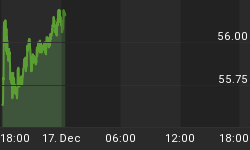Inquiring minds are digging into the just released Personal Income and Outlays Report for August 2011.
Personal Income
Personal income decreased $7.3 billion, or 0.1 percent, and disposable personal income (DPI) decreased $5.0 billion, or less than 0.1 percent, in August, according to the Bureau of Economic Analysis. Personal consumption expenditures (PCE) increased $22.7 billion, or 0.2 percent. In July, personal income increased $17.1 billion, or 0.1 percent, DPI increased $14.4 billion, or 0.1 percent, and PCE increased $76.6 billion, or 0.7 percent, based on revised estimates.
Real disposable income decreased 0.3 percent in August, compared with a decrease of 0.2 percent in July. Real PCE decreased less than 0.1 percent, in contrast to an increase of 0.4 percent.
Wages and Salaries
Private wage and salary disbursements decreased $12.2 billion in August, in contrast to an increase of $23.8 billion in July. Goods-producing industries' payrolls decreased $1.3 billion, in contrast to an increase of $6.3 billion; manufacturing payrolls decreased $2.9 billion, in contrast to an increase of $5.8 billion. Services-producing industries' payrolls decreased $10.9 billion, in contrast to an increase of $17.5 billion. Government wage and salary disbursements increased $0.4 billion, in contrast to a decrease of $1.8 billion.
Real DPI, real PCE and price index
Real DPI -- DPI adjusted to remove price changes -- decreased 0.3 percent in August, compared with a decrease of 0.2 percent in July.
Real PCE -- PCE adjusted to remove price changes -- decreased less than 0.1 percent in August, in contrast to an increase of 0.4 percent in July. Purchases of durable goods increased 0.1 percent, compared with an increase of 2.2 percent. Purchases of nondurable goods decreased 0.4 percent, compared with a decrease of 0.5 percent. Purchases of services increased 0.1 percent, compared with an increase of 0.4 percent.
PCE price index -- The price index for PCE increased 0.2 percent in August,compared with an increase of 0.4 percent in July. The PCE price index, excluding food and energy, increased 0.1 percent, compared with an increase of 0.2 percent.
Some charts will help put these numbers onto perspective.
Real Disposable Personal Income Since 1969
Real Disposable Personal Income Since 1989
Real Disposable Personal Income % Change from Year Ago
The second chart is the same as the first except the time period is smaller to better show the decline in the last recession. Together the charts show an unprecedented decline in real personal income.
The third chart shows percentage change from a year ago. Note how rate it is for this number to cross the zero-line. It is headed there again, following an unprecedented drop in 2008-2009.
Unlike the 1970's where consumer prices were soaring this decline comes at a time when the Personal Consumption Expenditures Price Index is tame.
Personal Consumption Expenditures (PCE) Price Index

![]() Larger Image - chart courtesy Personal Consumption Expenditures: August Price Index by Doug Short
Larger Image - chart courtesy Personal Consumption Expenditures: August Price Index by Doug Short
It's Credit that Matters
Inflationists will immediately howl over excluding food and energy from the price index (and they will be right). However, inflationists conveniently ignore the collapse in home prices, instead focusing on the price of a Big Mac.
When energy prices send price index lower (which will happen shortly), the inflationists will conveniently ignore that data as well, preferring to scream inflation when commodities are rising while hiding under a rock when commodity prices fall.
Moreover, and more importantly, focus on prices is silly in the first place because in a credit-based economy it is expansion and contraction of credit that matters, not modest increases or decreases in prices (totally ignoring the plunge in home prices to boot).
Drop in Personal Income Highly Deflationary
With real wages falling and jobs exceptionally hard to get (and keep), this drop in personal income will be accompanied with more unwillingness of banks to lend, and therefore must be considered highly deflationary.
For further discussion as to a realistic approach to what inflation and deflation are all about, please see
- Shilling Sees Evidence of Deflation in 5 of 7 Key Areas; Bernanke Begs Congress for Fiscal Stimulus, Admits Fed is Out of Bullets
- Yes Virginia, U.S. Back in Deflation; Inflation Scare Ends; Hyperinflationists Wrong Twice Over
- Bizarro World Inflation; About that 2011 Hyperinflation Call ...















